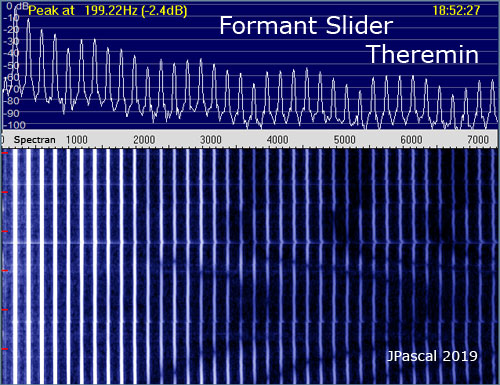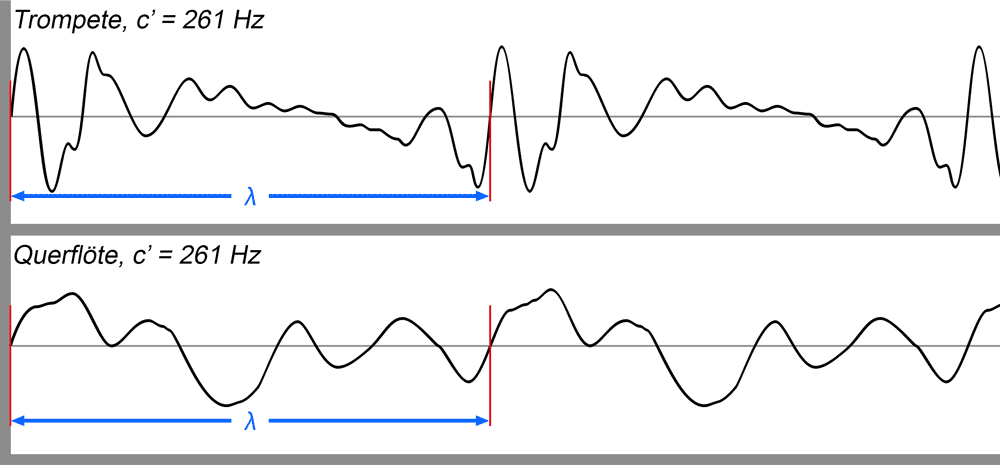A further thought to theremin as a voice.
Normally, a theremin has -after heterodyning and demodulation- no formants. Playing a deeper or higher tone - the time signal form is always similar, only the duration of the time periods changes. Due to a.f. filtering some phase distortions occur, but thats all of effect.
The more ripples are within one time period the more intensive and amplitude-different overtones higher order you get. This is the key to the timbre creations. If one would interpret the harmonics maxima here as formants, the theremin had sliding formants along the pitch.
Using the derived formant-frequency formula above: In analogy to the voice of humans, these behavior would be only reachable by changing the speed of sound in air.
The theremin comparison with human vocal voice is therefore reasonable, if we imagine the pitch high of the voice would be varied like helium speech.



